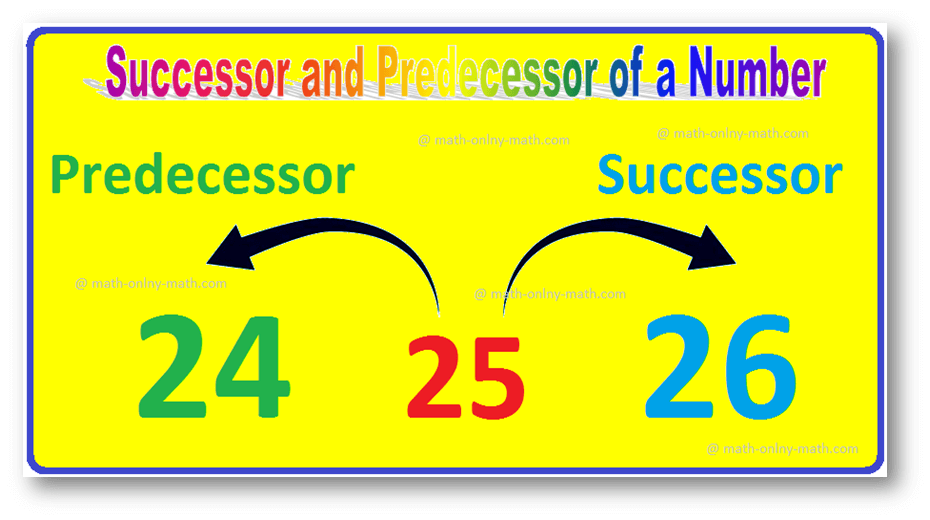Subscribe to our ▶️ YouTube channel 🔴 for the latest videos, updates, and tips.
Home | About Us | Contact Us | Privacy | Math Blog
Quadratic Equation cannot have more than Two Roots
We will discuss here that a quadratic equation cannot have more than two roots.
Proof:
Let us assumed that α, β and γ be three distinct roots of the quadratic equation of the general form ax2 + bx + c = 0, where a, b, c are three real numbers and a ≠ 0. Then, each one of α, β and γ will satisfy the given equation ax2 + bx + c = 0.
Therefore,
aα2 + bα + c = 0 ............... (i)
aβ2 + bβ + c = 0 ............... (ii)
aγ2 + bγ + c = 0 ............... (iii)
Subtracting (ii) from (i), we get
a(α2 - β2) + b(α - β) = 0
⇒ (α - β)[a(α + β) + b] = 0
⇒ a(α + β) + b = 0, ............... (iv) [Since, α and β are distinct, Therefore, (α - β) ≠ 0]
Similarly, Subtracting (iii) from (ii), we get
a(β2 - γ2) + b(β - γ) = 0
⇒ (β - γ)[a(β + γ) + b] = 0
⇒ a(β + γ) + b = 0, ............... (v) [Since, β and γ are distinct, Therefore, (β - γ) ≠ 0]
Again subtracting (v) from (iv), we get
a(α - γ) = 0
⇒ either a = 0 or, (α - γ) = 0
But this is not possible, because by the hypothesis a ≠ 0 and α - γ ≠ 0 since α ≠ γ
α and γ are distinct.
Thus, a(α - γ) = 0 cannot be true.
Therefore, our assumption that a quadratic equation has three distinct real roots is wrong.
Hence, every quadratic equation cannot have more than 2 roots.
Note: If a condition in the form of a quadratic equation is satisfied by more than two values of the unknown then the condition represents an identity.
Consider the quadratic equation of the general from ax2 + bx + c = 0 (a ≠ 0) ............... (i)
Solved examples to find that a quadratic equation cannot have more than two distinct roots
Solve the quadratic equation 3x2 - 4x - 4 = 0 by using the general expressions for the roots of a quadratic equation.
Solution:
The given equation is 3x2 - 4x - 4 = 0
Comparing the given equation with the general form of the quadratic equation ax^2 + bx + c = 0, we get
a = 3; b = -4 and c = -4
Substituting the values of a, b and c in α = −b−√b2−4ac2a and β = −b+√b2−4ac2a we get
α = −(−4)−√(−4)2−4(3)(−4)2(3) and β = −(−4)+√(−4)2−4(3)(−4)2(3)
⇒ α = 4−√16+486 and β =4+√16+486
⇒ α = 4−√646 and β =4+√646
⇒ α = 4−86 and β =4+86
⇒ α = −46 and β =126
⇒ α = -23 and β = 2
Therefore, the roots of the given quadratic equation are 2 and -23.
Hence, a quadratic equation cannot have more than two distinct roots.
11 and 12 Grade Math
From Quadratic Equation cannot have more than Two Roots to HOME PAGE
Didn't find what you were looking for? Or want to know more information about Math Only Math. Use this Google Search to find what you need.
Recent Articles
-
Successor and Predecessor | Successor of a Whole Number | Predecessor
Jul 29, 25 12:59 AM
The number that comes just before a number is called the predecessor. So, the predecessor of a given number is 1 less than the given number. Successor of a given number is 1 more than the given number… -
Worksheet on Area, Perimeter and Volume | Square, Rectangle, Cube,Cubo
Jul 28, 25 01:52 PM
In this worksheet on area perimeter and volume you will get different types of questions on find the perimeter of a rectangle, find the perimeter of a square, find the area of a rectangle, find the ar… -
Worksheet on Volume of a Cube and Cuboid |The Volume of a RectangleBox
Jul 25, 25 03:15 AM
We will practice the questions given in the worksheet on volume of a cube and cuboid. We know the volume of an object is the amount of space occupied by the object.1. Fill in the blanks: -
Volume of a Cuboid | Volume of Cuboid Formula | How to Find the Volume
Jul 24, 25 03:46 PM
Cuboid is a solid box whose every surface is a rectangle of same area or different areas. A cuboid will have a length, breadth and height. Hence we can conclude that volume is 3 dimensional. To measur… -
Volume of a Cube | How to Calculate the Volume of a Cube? | Examples
Jul 23, 25 11:37 AM
A cube is a solid box whose every surface is a square of same area. Take an empty box with open top in the shape of a cube whose each edge is 2 cm. Now fit cubes of edges 1 cm in it. From the figure i…






New! Comments
Have your say about what you just read! Leave me a comment in the box below. Ask a Question or Answer a Question.